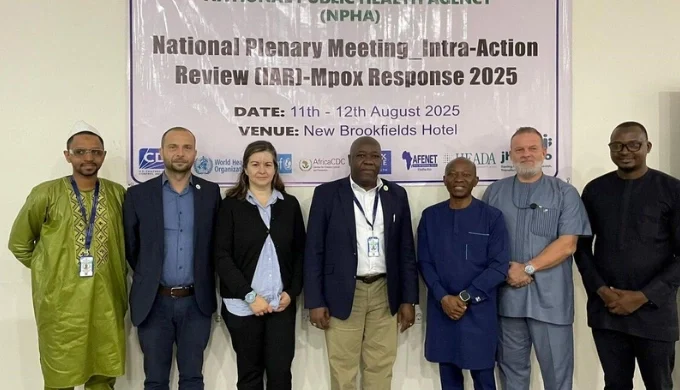The European Space Agency (ESA) has joined forces with Constellation Technologies & Operations (CTO) to pioneer a revolutionary space-based 5G connectivity service, marking a major milestone in European technological sovereignty. Set to launch in June 2025, this collaboration will test the first regenerative 5G payload operating in the millimeter wave (mmWave) band aboard a Low Earth Orbit (LEO) satellite. This initiative aims to create a hybrid network that seamlessly integrates space and terrestrial 5G, providing high-speed, low-latency internet access globally—including underserved and remote areas.
ESA and CTO: A Strategic Partnership for European Space-Based 5G
A Shared Vision for European Technological Sovereignty
At a time when space-based connectivity is dominated by American and Chinese giants, ESA and CTO’s partnership represents a bold “Made in Europe” alternative. The collaboration focuses on developing a neutral, shared, and independently operated space infrastructure that empowers telecom operators to deliver 5G services from space without massive capital investments in proprietary satellite constellations.
Charles Delfieux, CEO of CTO, emphasized the strategic ambition:
“This alliance with ESA reflects a shared ambition: to build a competitive European sovereignty in space connectivity, powered by bold technology designed and developed in Europe.”
Laurent Jaffart, ESA’s Director of Connectivity and Secure Communications, added:
“The upcoming tests with CTO will pave the way for new hybrid use cases at the intersection of terrestrial and space networks.”
The “Early Test”: Europe’s First Regenerative 5G Payload in Space
The core of this partnership is the “Early Test,” a pioneering experiment involving a regenerative 5G payload operating in the 5G FR2 (mmWave) spectrum onboard a satellite scheduled for launch in June 2025. Unlike traditional relay satellites, this payload can process and regenerate 5G signals onboard, enabling direct interoperability with terrestrial 5G networks and reducing latency.
ESA’s experimental capabilities at its ECSAT facility in Oxfordshire, UK, will support these trials, combining French-developed payload technology with European ground infrastructure. This test is a technological pathfinder for CTO’s future constellation of Very Low Earth Orbit (VLEO) satellites, designed to deliver affordable, sustainable, and high-performance 5G connectivity worldwide.
The Promise of Space-Based 5G: Use Cases and Market Potential
Phased Deployment and Commercial Viability
A comprehensive ESA-led study involving Airbus Defence and Space, Eurescom, Fraunhofer FOKUS and IIS, and the University of the Bundeswehr Munich has demonstrated that space-based 5G infrastructure is not only feasible but commercially viable. The study outlines a phased rollout:
- Narrowband applications as early as 2025
- Wideband services starting from 2029
- Full broadband services planned thereafter
Subscription fees are projected to be affordable, ranging from €6 per month for basic connectivity to €60 for premium services, making space-based 5G accessible to both individual consumers and businesses.
Diverse Use Cases Across Industries
The study identified 77 distinct use cases across transportation, business, public services, automotive, rail, maritime, aviation, logistics, industry 4.0, agriculture, finance, public safety, disaster relief, utilities, smart cities, health, and broadcasting. For example, automotive applications could include real-time navigation updates and advanced autonomous driving features enabled by ubiquitous 5G coverage.
This hybrid connectivity model promises to bridge the digital divide by extending reliable high-speed internet to rural, maritime, and disaster-affected areas, where terrestrial infrastructure is limited or unavailable.
Technological Challenges and ESA’s Ongoing Research
Despite the promising outlook, critical technology challenges remain. The study highlights the need for more energy-efficient satellite payloads and advanced antenna systems to optimize performance and sustainability. ESA is actively funding further research under its “Space for 5G/6G and Sustainable Connectivity” programme to address these issues and accelerate industrial development.
ESA also supports the development of 3GPP-compliant Non-Terrestrial Networks (NTN), ensuring that space-based 5G integrates seamlessly with existing global standards and terrestrial networks.
A New Era of Hybrid Connectivity: Space Meets Earth
Complementing Terrestrial Networks
The CTO-ESA collaboration envisions a future where VLEO satellites operate in tandem with terrestrial 5G networks, creating a resilient and inclusive hybrid system. Telecom operators can use their existing 5G spectrum in space, maintaining full control over service quality without the need to build dedicated satellite constellations. This plug-and-play approach reduces costs and accelerates deployment.
Impact on Telecom Operators and End Users
For telecom operators, this model offers a competitive, scalable solution to extend coverage and improve service continuity. For end users, it means reliable, high-speed internet access regardless of location—whether deep in the countryside, at sea, or in emergency zones affected by natural disasters.
ESA and CTO’s joint initiative marks a significant leap forward in the global race for space-based telecommunications. By launching Europe’s first regenerative 5G mmWave payload in space, they are setting the stage for a new era of hybrid connectivity that is affordable, sustainable, and universal.
This partnership not only strengthens Europe’s technological sovereignty but also promises to redefine how digital connectivity is delivered worldwide, breaking geographic barriers and enabling new applications across industries.
As the June 2025 launch approaches, the world will be watching Europe’s bold step to lead the future of space-based 5G—where the sky is no longer the limit for connectivity.









